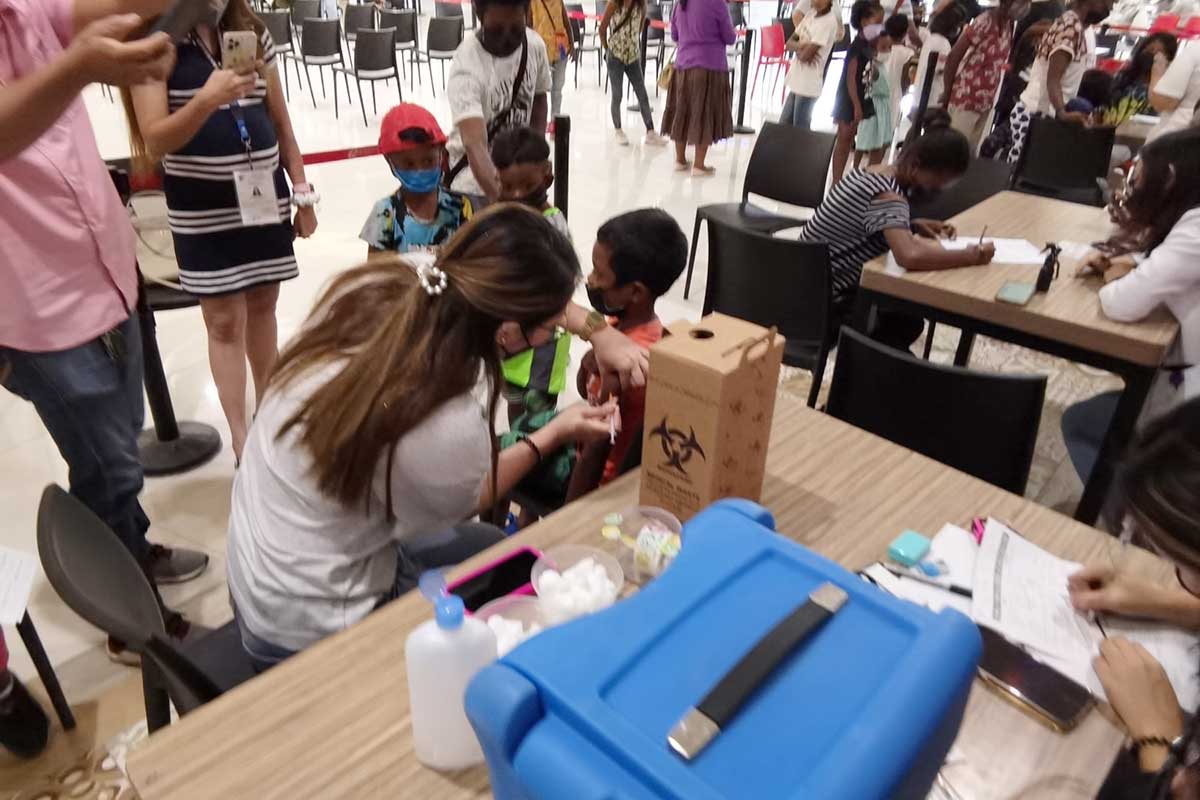
By Joseph B.A. Marzan
Region 6 reached its target population for coronavirus disease 2019 (COVID-19) vaccination during the Department of Health-Western Visayas Center for Health Development’s (DOH-WV CHD) National Vaccination Days, except for one key sector: the senior citizens.
While 156,828 COVID vaccines were administered, or 101.77 percent of the 154,097 target population, during the 9-day inoculation drive, only 6,885 or 13.06 percent of the 52,731 targeted A2 (senior citizen) population took their doses.
Only Guimaras province was able to reach the 70 percent threshold for herd immunity in the A2 population, with 206 out of 240 senior citizens vaccinated.
Iloilo province followed with 37.38 percent, then Aklan (8.95 percent), Negros Occidental (7.43 percent), and Antique (3.40 percent).
Some areas reflected zero achievement, but this was due to lack of allocated targets even if jabs were administered in the A2 population of Capiz (388), Bacolod City (755), and Iloilo City (91).
DOH-WV CHD spokesperson Mariebe Adrias said the weakness in their vaccination drives was due to the refocused support of local government units to other COVID response strategies, including the vaccination of minors aged 5 to 11 years old, as well as the distance between the residences and vaccination sites.
“The distance between the vaccination sites and the residence of the target populations (sic) affects the cold chain (storage) for the vaccines. We cannot bring vaccines to some of the areas because we see that our cold chain equipment, including the vaccine carriers, cannot last to maintain the temperature which may destroy the vaccines as we travel to Geographically Isolated and Disadvantaged Areas,” Adrias said.
Adrias said that the strength of the DOH’s COVID vaccination campaign still rests on the eagerness of the LGUs and healthcare workers, as well as the stable supply of vaccines.
“It continues that the strength of our vaccination campaign is the [LGUs] and healthcare workers. The 4th vaccination drive just showed that the people listen to their barangay officials who have been shoring up in their communities to help out those who haven’t been vaccinated [against COVID], especially our senior citizens and the youth,” she said.
“We don’t see shortages of the COVID vaccines [in Western Visayas] and we can see the proper means of deploying the vaccines. We see the steady flow of support to our COVID response and vaccination which remains to be an inter-agency response,” she said.
Adrias said that the DOH-WV CHD welcomes the suggestions of more mobile strategies for vaccination by hiring more vaccinators and improving vaccine logistics to reach houses.
“We are pushing that our health workers, in their house-to-house visits, they should also be the ones who are explaining and making people understand [COVID vaccinations] especially those in their own areas, and they can lay down the benefits of being vaccinated against COVID-19, so that is being supported by the [DOH-WV CHD] via providing manpower and human resources,” she said.
The initial 4-day national vaccination drive was extended by the DOH until March 18 amid low turnouts and missed targets.
The DOH-WV CHD’s total COVID vaccination data as of 6 a.m. of March 21 indicated that 4.73 million vaccines were administered, comprising 73.68 percent of the 6.42 million target population in the region.



















